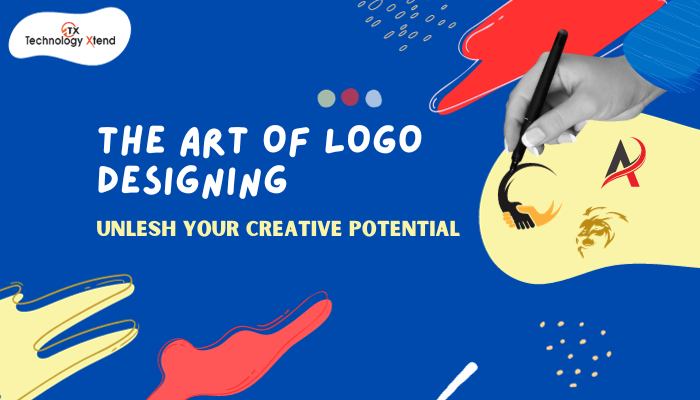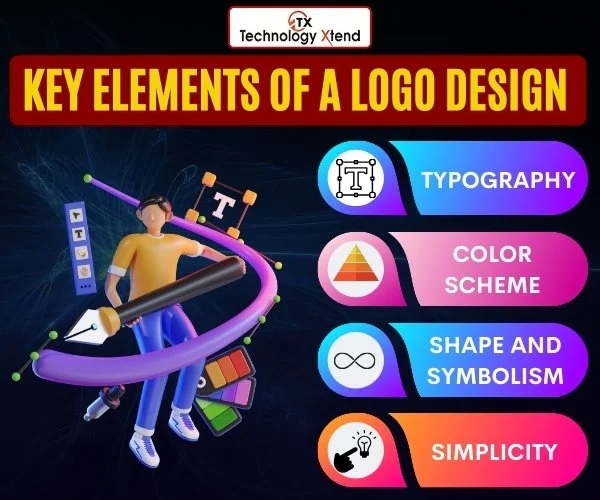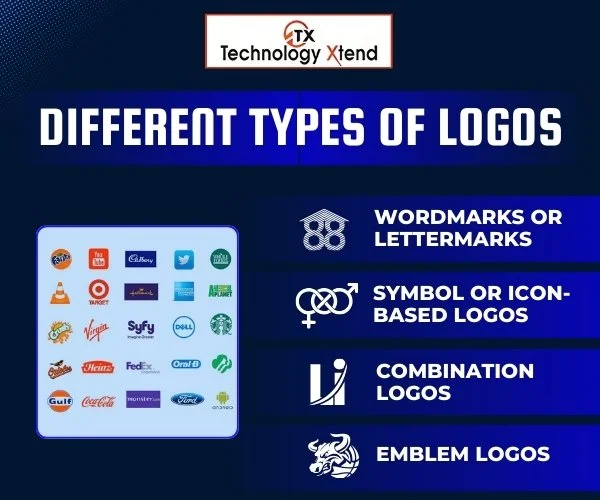
Technology XtendThe Art of Logo Designing: Unleash Your Creative Potential
Unlock the secrets behind breathtaking logo design – ignite your creative spark and transform your brand identity!
Welcome to the Ultimate Logo Design FAQ Guide: Everything You Need to Know. In this blog post, we will explore the art of logo design, its importance, and how you can unleash your creative potential to create a captivating logo that represents your brand. A well-designed logo plays a crucial role in establishing brand identity and building recognition. So, let's dive in and discover everything you need to know about logo design!
Logo Design Basics
What is a logo?
A logo is a visual representation of a brand or company. It is a symbol, mark, or emblem that encapsulates the essence, values, and personality of the brand. A logo is typically used across various marketing materials, such as websites, business cards, merchandise, and advertisements, to create instant brand recognition.
What are the key elements of a logo design?
A well-designed logo incorporates several key elements:
- Typography: The choice of fonts plays a crucial role in conveying the brand's personality.
- Color Scheme: Colors evoke emotions and can communicate the brand's values and message.
- Shape and Symbolism: The shapes used in a logo can evoke specific meanings and associations.
- Simplicity: A simple logo is more memorable and versatile, making it easier for customers to recognize and associate with the brand.

How to determine the right color scheme for your logo?
The right color scheme can significantly impact how your logo is perceived. Consider the following factors when choosing a color scheme for your logo:
- Industry and Audience: Different colors evoke different emotions and have cultural associations. Consider your industry and target audience when selecting colors.
- Brand Personality: Think about the personality and values of your brand. Warm colors like red and orange evoke energy, while cool colors like blue and green convey calmness.
- Contrast and Legibility: Ensure that the colors chosen provide enough contrast and do not hinder the legibility of the logo.
Should a logo be simple or complex?
In general, simplicity is key when it comes to logo design. A simple logo tends to be more memorable, versatile, and scalable across different platforms and sizes. Complex logos can be overwhelming and may not translate well in various applications. However, simplicity does not mean boring or generic. By focusing on the unique aspects of your brand and distilling it into a clean and simple design, you can create a logo that stands out.
Do you need to hire a professional logo designer?
While it is possible to create a logo yourself, hiring a professional logo designer can save you time and ensure a polished and professional result. Professional logo designers have expertise in creating impactful designs that align with your brand's values and objectives. They understand the principles of design, typography, and color psychology, resulting in a logo that effectively communicates your brand's identity.
Also Read - 7 Smart Ways to Use social media For Business Growth and Revenue
Logo Design Process
Before diving into designing your logo, it is essential to brainstorm and gather ideas. Start by defining your brand's mission, values, and unique selling points. Then, research your industry and competitors to understand what works and what doesn't. Sketch rough concepts, explore different styles, and play around with shapes, symbols, and typography. Consider seeking inspiration from other successful logos while ensuring your design remains unique to your brand.
What are the different types of logos?
Logos can be categorized into several types:
- Wordmarks or Lettermarks: These logos focus on typography and use the brand or company name as the primary element.
- Symbol or Icon-based Logos: These logos rely on a unique symbol or icon to represent the brand without relying on text.
- Combination Logos: These logos blend both typography and symbols to create a balanced and integrated design.
- Emblem Logos: These logos often resemble badges or seals, combining typography and symbols inside a single shape.

How to choose the right typography for your logo?
Typography sets the tone for your logo and can convey specific emotions or ideologies. Consider the following when choosing the right typography:
- Font Style: Different font styles evoke different feelings. Serif fonts can convey tradition and elegance, while sans-serif fonts offer a contemporary and modern look.
- Legibility: Ensure that the chosen font is easily readable, even when the logo is scaled down. Avoid overly decorative or complex fonts that can hinder legibility.
- Consistency: Use typography that aligns with your brand's overall visual identity to create consistency across different materials and platforms.
What tools can be used to design a logo?
There are numerous tools available to help you design a logo. Some popular options include:
- Adobe Illustrator: A powerful vector-based design software, ideal for creating scalable logos.
- Canva: An easy-to-use online design tool with pre-made templates and elements to create simple logos.
- Sketch: A popular design tool for macOS, offering a range of features for creating professional logo designs.
- Inkscape: A free and open-source vector graphics editor that can be used to create logo designs.
What is the ideal file format to save a logo in?
When saving your logo, it is crucial to choose the right file format to ensure optimal quality and versatility. The most commonly used file formats for logos include:
- Vector Files (AI, EPS, SVG): These formats create scalable logos that can be resized without losing quality.
- Raster Files (PNG, JPEG): These formats are suitable for web and digital applications, but they may lose quality when scaled up.
Developing a Memorable Logo
To create a timeless logo, consider the following tips:
- Avoid Trends: While it's tempting to follow logo design trends, they tend to become outdated quickly. Opt for a classic and timeless design that will stand the test of time.
- Simplicity and Clarity: Keep your logo design simple and easy to understand to ensure it remains relevant and memorable for years to come.
- Focus on Core Values: Your logo should represent the core values and identity of your brand, rather than temporary market trends or fads.
What makes a logo memorable?
A memorable logo incorporates the following elements:
- Simplicity: A simple design makes it easier for people to remember and recognize your logo.
- Uniqueness: A distinct and unique logo stands out among competitors, making it more memorable.
- Meaningful Representation: A logo that reflects your brand's values and identity creates a deeper connection with your audience.
What are the common mistakes to avoid when designing a logo?
When designing a logo, it's essential to avoid these common mistakes:
- Overly Complex Design: A complex logo can be confusing and difficult to reproduce in different sizes or applications.
- Overused Fonts or Icons: Using generic fonts or icons can make your logo appear generic and unmemorable.
- Poor Color Choice: Colors evoke emotions and carry meanings. Choosing the wrong color scheme can convey the wrong message or fail to resonate with your target audience.
- Ignoring Scalability: Ensure that your logo remains clear and legible when scaled down or reproduced in different mediums.
How to ensure your logo stands out from competitors?
To make your logo stand out from competitors, consider the following:
- Research Competitors: Analyze your competitors' logos to identify common design elements and visual themes. Find unique ways to differentiate your logo from theirs.
- Showcase Your Uniqueness: Highlight the distinctive aspects of your brand or company through thoughtful design elements or symbolism.
- Be Bold and Memorable: Take creative risks and think outside the box to create a visually appealing logo that captures attention.
Is it necessary to follow logo design trends?
While logo design trends can provide inspiration, it is not necessary to follow them strictly. Trends come and go, and your logo should represent your brand's unique identity and values. However, staying aware of current design trends can help you make informed decisions and ensure your logo remains contemporary.
Logo Implementation and Usage
Your logo should be adaptable and scalable to work well on various platforms. Consider these tips:
- Responsive Design: Ensure your logo adapts to different screen sizes for digital platforms.
- Background Adaptability: Use different versions or color variations of your logo to ensure it stands out against different background colors or images.
- Consistency: Maintain consistent usage of your logo across all platforms to create a strong and unified brand identity.
Can a logo be changed in the future?
While logos can evolve or be refreshed over time, it is generally advisable to keep your logo consistent to build brand recognition and loyalty. Major logo changes should be done sparingly and with a clear strategy to avoid confusing existing customers.
How to protect your logo through copyright?
To protect your logo, you should consider these steps:
- Trademark Registration: Register your logo as a trademark with the appropriate intellectual property office in your country to establish legal protection.
- Copyright Notice: Display a copyright notice with your logo wherever it is used to assert your ownership.
- Monitor Infringement: Regularly monitor the use of your logo to detect any unauthorized usage and take appropriate legal actions.
What are the best practices for using a logo in marketing materials?
When using your logo in marketing materials, keep these best practices in mind:
- Consistent Placement: Place your logo in a consistent location across different marketing materials for brand recognition.
- Proper Sizing: Ensure your logo is appropriately sized and maintains its proportions in relation to other design elements on the marketing material.
- High-Quality Reproduction: Use high-resolution versions of your logo to maintain quality when printed or displayed digitally.
- Brand Guidelines: Develop brand guidelines that outline logo usage rules, color codes, and any specific design instructions to ensure consistent application across different materials.
Is it important to test a logo before finalizing it?
Testing a logo before finalizing it can provide valuable insights. Consider seeking feedback from your target audience or conducting surveys to gauge their impressions and associations with the logo. Testing allows you to make informed decisions and ensure that your logo aligns with your brand's objectives and resonates with your target audience.
Frequently Asked Questions
The cost of a professionally designed logo varies depending on factors such as the experience and reputation of the designer, the complexity of the design, and the usage rights. Logo design prices can range from a few hundred to several thousand dollars. It is recommended to research and choose a designer who aligns with your budget and requirements.
Can I create a logo myself without design experience?
Yes, it is possible to create a logo yourself without design experience. There are numerous online tools and software available that provide templates and easy-to-use interfaces for creating basic logos. However, keep in mind that the result may not match the quality and professionalism of a design created by an experienced logo designer.
What are the color psychology principles in logo design?
Color psychology is the study of how colors impact emotions, behaviors, and perceptions. Different colors are associated with distinct emotions and can have cultural and psychological influences. For example:
- Red: Often associated with energy, passion, and urgency.
- Blue: Symbolizes trust, calmness, and reliability.
- Yellow: Evokes happiness, optimism, and creativity.
Are there any logo design trends for this year?
Logo design trends can vary from year to year. Current trends include minimalism, responsive logos, and geometric designs. However, it is essential to create a logo that aligns with your brand identity rather than following trends for the sake of it.
How long does it typically take to design a logo?
The time required to design a logo depends on several factors, such as the complexity of the design, the number of revisions, and the designer's workflow. On average, the logo design process can take anywhere from a few days to a few weeks.
Also Read - Understand the Instagram Algorithm
Conclusion
We hope this Ultimate Logo Design FAQ Guide has provided you with valuable insights and guidance to embark on your logo design journey. Happy designing!
Related Articles









































